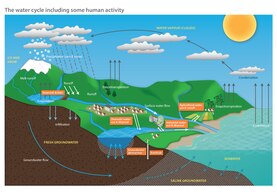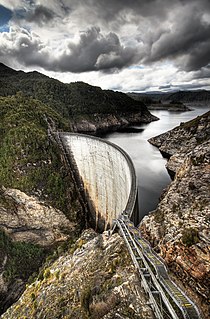Water cycle management
Recently, politics and socio-economic aspects are also considered in water cycle management due to inequal distribution of quantity and quality of freshwater worldwide.
The core focus of hydrometeorology is on the transfer of water and energy between the land surface and the lower atmosphere.
The outputs of these models can be used to deal with and mitigate the effects of precipitation events on the water cycle management.
Fresh water is a limited resource and it is unevenly distributed globally and even locally, and it is consumed by people, industry, agriculture and nature alike.
To overcome this, in future, water resource management should transition from the current “prediction and control” methods to a “learning approach”.
In terms of water cycle management most important ones are reservoirs, dams, sewerage and pumping stations.
In terms of water cycle management re-use treatments are more important than static structures like dams.
[7] Still, after extensive treatment methods significant amounts of harmful substances, such as pharmaceuticals, are observed to return environment and water cycle.

